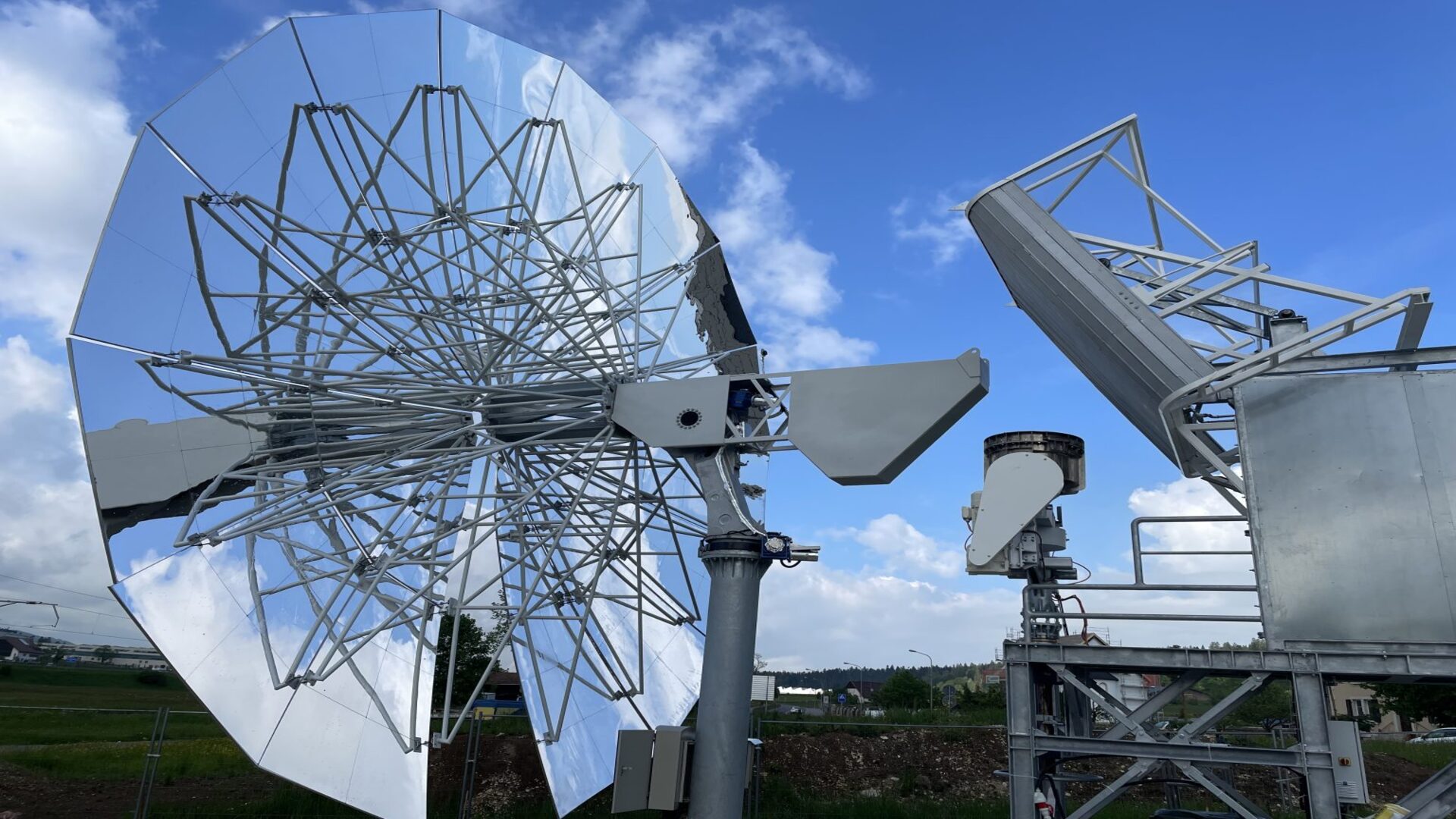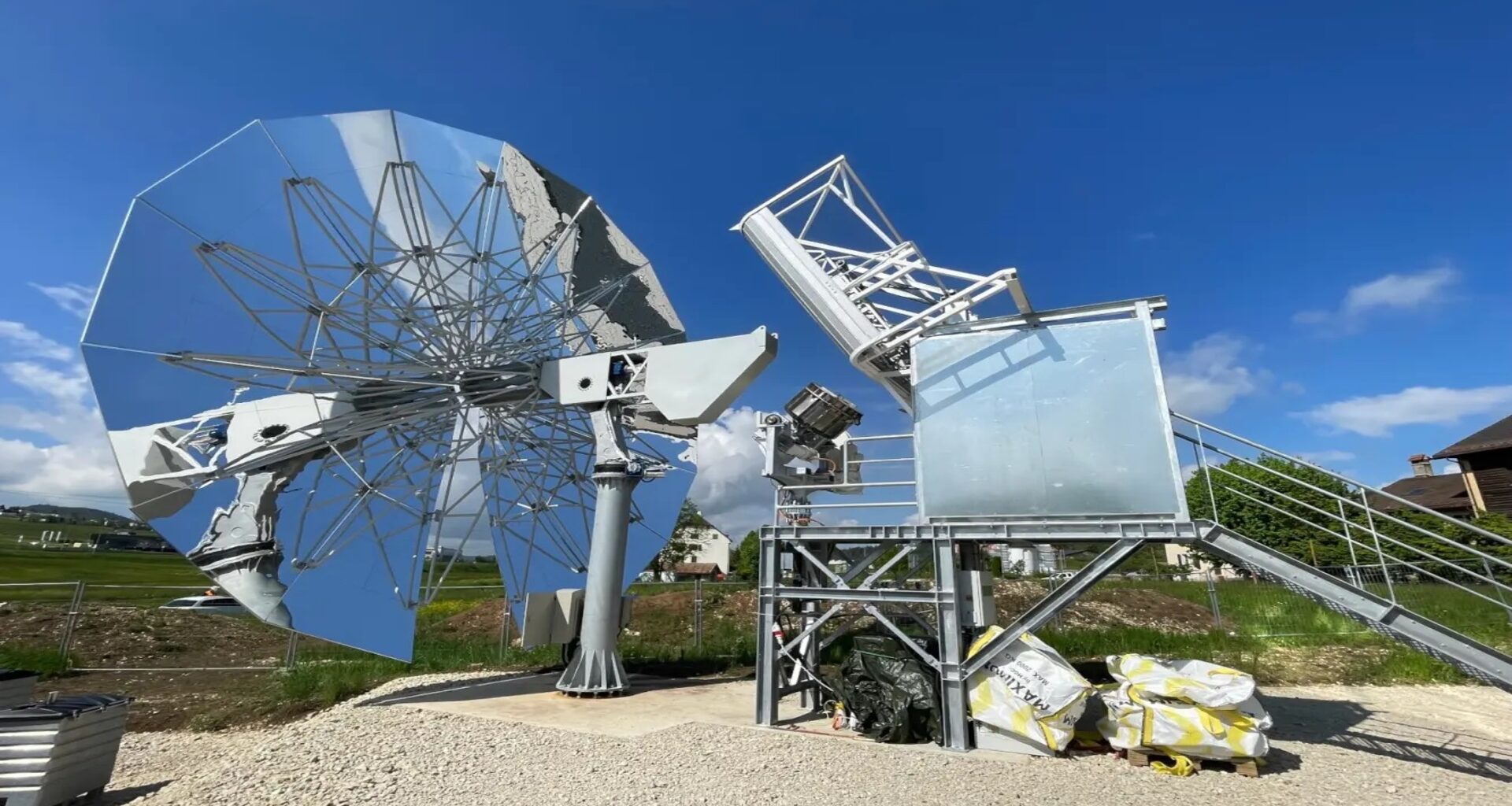A Swiss company has recently launched the world’s first two solar furnaces that will reportedly melt down and recycle the crucial industry’s steel offcuts by using green energy.
Jura-based Panatere, a pioneer in the transformation recycled and recyclable raw materials, inaugurated the groundbreaking installations in La Chaux-de-Fonds, the historic cradle of the Swiss watchmaking industry on October 3.
The two pilot systems are designed to recycle high-quality steel waste from local watchmakers and medical manufacturers. Both industries are known for their precision engineering and intensive use of stainless steel.
The project is supported by Haute Ecole Arc Ingénierie and the University of Franche-Comté under the Interreg France–Switzerland program. “I’ve been dreaming of this moment for 10 years,” Raphael Broye, Panatere’s CEO revealed.
The revolutionary concept uses solar rays to reach temperatures as high as 2,642 degrees Fahrenheit (1,450 degrees Celsius) to melt stainless steel without burning any fossil fuels.
According to the firm, the larger prototype includes a 1,485-square-foot (138 square meters) heliostat made of 40 movable mirrors that track the sun and reflect its rays towards a 32-foot-wide (10 meters) concave dish concentrator.
Meanwhile, the smaller system features a 323-square-foot (30 square meters) heliostat, as well as a compact 129-square-foot (12 square meters) concentrator which consists of about 460 mirrors.
The light is directed onto a crucible inside a solar reactor, and melts metal scraps that are then cast into new ingots. Both furnaces rely on the same two-step process that captures sunlight and amplifies its intensity thousands of times.
“This second design, which we plan to prioritize for future use, can concentrate light up to 5,500 times the intensity of the sun, generating temperatures as high as 2,000 degrees Celsius [3,632 degrees Fahrenheit] in the crucible,” Loïc Bonsack, innovation and industrialization project manager at Panatere, stated.
The figures were verified by simulations from researchers at the Université de Franche-Comté and the Haute École Arc Ingénierie (HE-Arc), who collaborated with Panatere under the Interreg France–Switzerland Rasol program.
A cleaner future
The company will continue working with local companies to test and refine the technology over the next few years. It plans to open a full-scale factory by 2028, either at the current site or in the Wallis mountains of southwestern Switzerland.
Once in operation, the company aims to produce up to 1,000 tons of recycled steel per year using solar energy alone. Officials believe that the innovation can significantly reduce carbon emissions while also promote circularity in the high-end manufacturing sector.
“Our role also includes analyzing the recycled steel alloys to ensure their quality,” Raymond Constantin, a specialist in materials characterization, said in a press release.
 The first two solar furnaces were installed at La Chaux-de-Fonds.
The first two solar furnaces were installed at La Chaux-de-Fonds.
Credit: Panatere
Producing 2.2 lbs (one kilogram) of conventional recycled steel emits around 15 lbs (6.8 kilograms) of CO2. Panatere estimates that the new technology could cut emissions to under 0.1 pounds (41 grams) per unit of steel produced, and reduce the carbon footprint by more than 165 times compared to conventional methods.
“Nowadays, there is a real economic model to develop,” Broye concluded, adding that this restores the prestige of short supply chains. “With the price levels and the scarcity of metals, we are able to find a position to make these projects profitable even with Swiss wages.”

